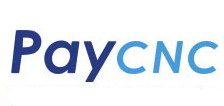As labor costs continue to rise, more and more 3-axis CNC machines on the market require the addition of a 4th axis to reduce the number of setups and lower labor costs. The following is a brief introduction to the process of adding a 4th axis.
First, we must determine whether our existing CNC machine can support the addition of a 4th axis. Currently, commonly seen Fanuc systems on the market include the 0 series, 0i-A series, 0i-B series, 0i-C series, 0i-D series, and 0i-F series. Due to their age, machines with 0, 0i-A, and 0i-B systems generally have little value for retrofitting and will not be discussed here.
So let’s take a look at the table below to see if your machine can support the addition of a 4th axis:
|
No. |
System |
4th Axis Addition |
Remarks |
|---|---|---|---|
|
1 |
0i-MC |
Yes |
|
|
2 |
0i-MATE-MC |
No |
|
|
3 |
0i-MD |
Yes |
|
|
4 |
0i-MATE-MD (C pkg) |
Optional |
Option diagnosis 1148#7=1 |
|
5 |
0i-MATE-MD (5 pkg) |
Optional |
Option diagnosis 1148#7=1, 1233#1=1 |
|
6 |
0i-MF |
Yes |
From the table above, you can determine whether your machine supports adding a 4th axis. (Some machines may already use the 4th axis for functions like a servo tool magazine—such cases are outside the scope of this discussion.)
Once the system requirements are met, we look at the motor and drive. Currently, the common types are the ai series and bi series. Motors from the ai and bi series are generally interchangeable and require little attention. However, drives must be selected carefully.
Our basic principle is to match the 4th axis drive to the same batch as the existing three axes. For example, if the first three axes use A06B-6114-HXXX, then the 4th axis should preferably also use A06B-6114-HXXX. Fanuc does offer some compatibility; for instance, the standard drive for the 0i-MD is A06B-6117-HXXX, but A06B-6240-HXXX can also be used. However, for the newer 0i-MF, only A06B-6240-HXXX is supported. So, as a general rule, stick with the same batch when possible.
Once the hardware is selected, we’ll talk about parameters and PLC. The Fanuc 0i series parameters are largely consistent with only minor differences. Refer to the table below for guidance:
|
No. |
Parameter |
Description |
Remarks |
|---|---|---|---|
|
1 |
1100 = 4 |
System controls 4 feed axes |
0i-MC exclusive |
|
2 |
1130 = 4 |
System controls 4 feed axes |
0i-MC and 0i-MD |
|
3 |
987 = 4 |
System controls 4 feed axes |
0i-MF exclusive |
|
4 |
1902#1 = 0 |
FSSB auto matching |
|
|
5 |
1005#1 = 1 |
Zero return without stopper (for absolute motors) |
|
|
6 |
1006#0 = 1 |
4th axis is a rotary axis |
|
|
7 |
1008#0,#2 = 1 |
Rotary axis cycle function |
|
|
8 |
1020 |
4th axis program name |
Depends on axis location |
|
9 |
1022 |
Axis in the basic coordinate system |
|
|
10 |
1023 |
Servo axis number |
Usually 4 |
|
11 |
1260 |
Movement per rotation |
Usually 360 |
|
12 |
1320 |
Positive software limit |
999999 |
|
13 |
1321 |
Negative software limit |
-999999 |
|
14 |
1420 |
Rapid traverse speed |
4000 |
|
15 |
1421 |
Rapid override F0 speed |
100 |
|
16 |
1423 |
JOG feed speed |
4000 |
|
17 |
1424 |
Manual rapid speed |
4000 |
|
18 |
1428 |
Return reference speed |
4000 |
|
19 |
1430 |
Max cutting feed speed |
4000 |
|
20 |
1620 |
Rapid accel/decel time constant |
100 |
|
21 |
1622 |
Cutting feed accel/decel time constant |
322 |
|
22 |
1624 |
JOG feed accel/decel time constant |
100 |
|
23 |
1815#4,#5=1 |
Absolute position setting |
Set APC first, then APZ |
|
24 |
2000 |
Initialization |
Servo screen quick setting |
|
25 |
2020 |
Motor code |
Servo screen quick setting |
|
26 |
2001 |
AMR |
Servo screen quick setting |
|
27 |
1820 |
Command multiplier |
Servo screen quick setting |
|
28 |
2084 |
Flexible gear numerator |
Servo screen quick setting |
|
29 |
2085 |
Flexible gear denominator |
Servo screen quick setting |
|
30 |
2022 |
Motor direction |
Servo screen quick setting |
|
31 |
2023 |
Speed pulse |
Servo screen quick setting |
|
32 |
2024 |
Position pulse |
Servo screen quick setting |
|
33 |
1821 |
Reference counter capacity |
Servo screen quick setting |
|
34 |
1825 |
Position loop gain |
3000 |
|
35 |
1826 |
In-position width |
10 |
|
36 |
1828 |
Position deviation limit during motion |
10000 |
|
37 |
1829 |
Position deviation limit when stopped |
500 |
Finally, regarding the PLC — since all CNC machine PLC programs on the market are custom-designed by their manufacturers, there is no unified standard. We can only provide a general overview.
As we are retrofitting a finished CNC machine, many signals don’t need to be handled manually. Just pay attention to the following internal PLC signals:
|
No. |
Signal Content |
|---|---|
|
1 |
G18.2 – 4th axis handwheel selection |
|
2 |
G100.3 – 4th axis positive direction |
|
3 |
G102.3 – 4th axis negative direction |
|
4 |
G126.3 – 4th axis servo off |
|
5 |
G130.3 – 4th axis interlock signal |
|
6 |
F102.3 – 4th axis in-motion signal |
In addition, you will need to handle:
-
4th axis unclamp detection signal
-
4th axis clamp detection signal
-
4th axis solenoid valve control signal
These three signals are not standardized and must be configured based on the actual situation by the installer.
Given the wide variety of CNC machines on the market and the differing design philosophies across manufacturers, installation personnel must continually summarize and accumulate experience to handle different scenarios effectively.
 USD
USD




